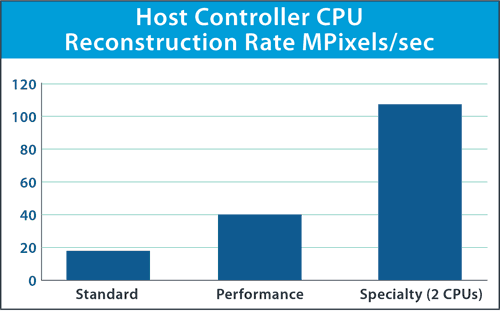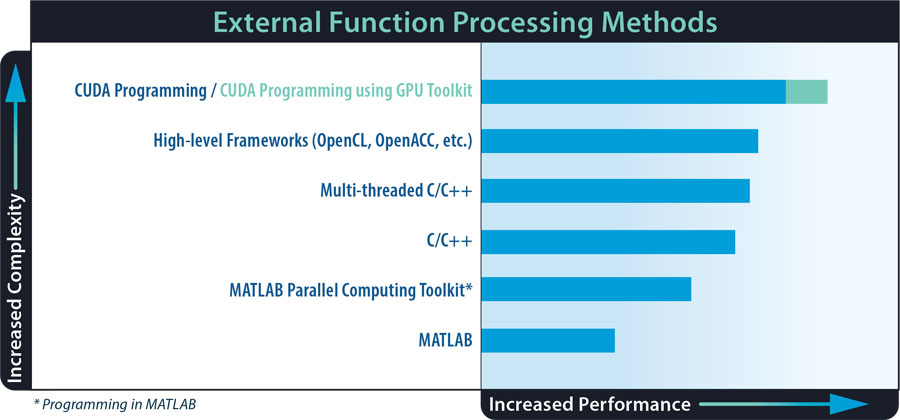High Performance Computing
Verasonics’ High Performance Computing options enable the use of some of today’s most advanced computing technologies and programming techniques. These offerings include advanced methods for process-intensive programming using the CPU (Central Processing Unit) and GPU (Graphics Processing Unit), combined with innovative hardware solutions such as high-speed data transfer or specialty host controllers. Ultrasound researchers can leverage a variety of tools, guidelines, and workflows resulting in reduced latency, improved frame rate, and increased data processing speed.
Verasonics currently supports computationally intensive applications using the CPU, GPU or both. Verasonics’ CPU-based reconstruction, which leverages vector instructions and multi-threading techniques to achieve reconstruction rates exceeding 100MPixels/sec (speed verified using an Apple Mac Pro® running macOS®), is extremely efficient and offers multiple ways for users to optimize custom applications. The Verasonics Image Reconstruction software option (included with Vantage® 64 LE, 128 and 256 channel systems), uses a proprietary pixel-oriented method of software beamforming to create images of the subject material or tissue and performs high-speed image reconstruction that can be customized with user-provided look-up tables and summation methods.

Performance comparison between Verasonics host computer offerings. Users have the option to choose the best system to meet their processing needs.
In the Vantage 4.8.4 release, Verasonics has added a guided framework and example scripts for users to develop their own compiled multi-threaded C/C++ code that will work in the Vantage-MATLAB® environment. This will enable a user to write a processing algorithm in C/C++ and embed it in the provided framework to parallelize their algorithm across all the available CPU cores.
Additional options open to ultrasound researchers:
- Using the MATLAB Parallel Computing Toolbox, which provides support for parallel processing on multiple GPUs with no CUDA programming required and no modifications to Verasonics’ software.
- Leveraging low-level GPU Programming via a variety of platforms (e.g., CUDA) to increase processing acceleration. This requires deeper programming knowledge.

Verasonics has optimized the processing algorithms for maximum throughput on the CPU.
Virtually all packaged algorithms are designed to utilize modern vectorized instructions for the CPU, as well as parallelizing the processing across all available CPU cores.
Research Applications Benefiting From Increased Processing Speeds
GPUs are well-suited for high-throughput execution of complex algorithms, enabling parallel processing tasks such as FFTs to be much faster.
Offerings such as the Verasonics GPU Toolkit with GPU Direct option provide tools and methods to leverage GPU processing power that can offer increased processing speeds in memory copy applications by up to a factor of 2. These options may enhance the performance of process intensive applications, such as:
- Beamforming
- Doppler Processing
- Volume Imaging
- Clutter Filtering
- Microvascular Imaging
- And more

Breaking Speed Limits: High-Performance Computing with the Vantage® System
December 1, 2022 • Webinar Replay
Presented by Bryan Cunitz, Sr. Verasonics Ultrasound Scientist
Learn more about high-performing computing capabilities with the Vantage Research Ultrasound System. This webinar will provide an overview of capabilities that enable users to process data at application appropriate frame rates.
11335 NE 122nd Way, Suite 100
Kirkland WA 98034

